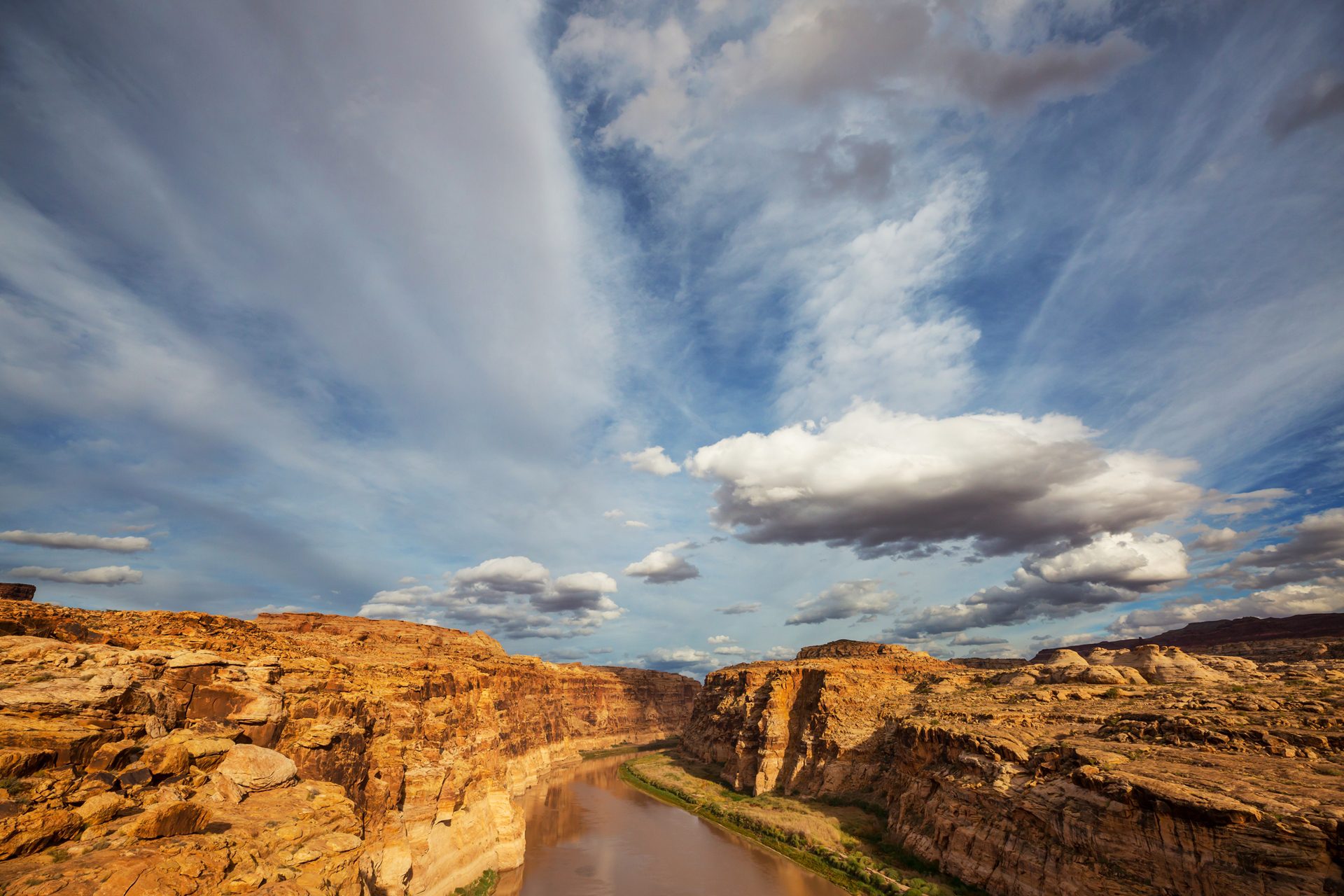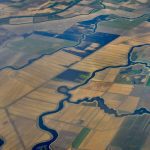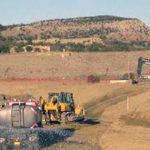- States face a November 11 deadline to reach a deal.
- Arizona’s governor accuses Colorado of stalling.
- Utah’s negotiator remains cautiously optimistic.
- Farms use 80% of the river’s water supply.
- Federal leadership gap may slow decisions.
Friday, November 7, 2025 — As the November 11 deadline approaches, negotiations over the future of the Colorado River are heating up. Arizona Governor Katie Hobbs accused the Upper Basin states—especially Colorado—of taking an “extreme negotiating position” by refusing to accept cuts while the Lower Basin continues to shoulder reductions. Utah’s river commissioner, Gene Shawcroft, struck a calmer tone, saying the states are “making steady progress” and working toward a framework for a February federal submission. The federal government has warned it will impose its own plan if the states fail to act.
Experts warn that the river’s supply is as tight as it was during the record lows of 2022, with little relief in sight unless this winter delivers above-average snowpack. Agriculture accounts for 80% of water use—over half of that for livestock feed—suggesting where reforms could have the most impact. Meanwhile, the Bureau of Reclamation still lacks a confirmed commissioner after Ted Cooke’s nomination was withdrawn, adding uncertainty to already tense talks that could end up in court if the states can’t agree.
The following breakdown of the negotiations comes from the Utah News Dispatch and is republished under the Creative Commons license CC BY-NC-ND 4.0.
and is republished under the Creative Commons license CC BY-NC-ND 4.0.
5 things to know as the clock runs down on Colorado River talks.
by Annie Knox, Utah News Dispatch
November 7, 2025
A fight over which states along the Colorado River have to cut their water use may still be damming up negotiations like the towering concrete of Lake Powell.
may still be damming up negotiations like the towering concrete of Lake Powell.
But time is running out. Utah and six other states are days away from their Nov. 11 deadline to reach a deal on how to manage the dwindling river and its reservoirs. If they don’t, the federal government has said it will decide for them. The existing agreement expires at the end of 2026.
Here are five things to know as the due date approaches:
Talks are tense
Arizona Gov. Katie Hobbs gave a glimpse into negotiations when she called out the upstream states this week, saying they’re taking an “extreme negotiating position” and refusing to commit to water cuts.
The Upper Basin states of Utah, Colorado, New Mexico and Wyoming have resisted mandatory cuts in dry years, saying they generally use less than they’re allocated. The Lower Basin states of Arizona, California and Nevada have said all seven should share water cuts during dry years.
Hobbs said a plan “where we shoulder the entirety of the water reductions while not one single acre-foot is put on the table by the Upper Basin states is an unacceptable outcome for Arizona families, farmers and businesses,” the Arizona Daily Star reported.
“This is the extreme negotiating position we are confronted with as the Upper Basin states, led by Colorado, continue to run down the clock,” Hobbs said while speaking at a conference in Tucson Wednesday. A Democrat, she called on the Trump administration to step in and broker a deal.
Utah’s negotiator is still optimistic
Gene Shawcroft, Utah’s Colorado River commissioner, seemed more positive. He said Thursday the states are “making steady progress,” but didn’t go into specifics.
“These are incredibly complex negotiations, and we’re continuing to work through some challenging issues,” Shawcroft said in a statement. He went on to say the states are “making steady progress on key issues the federal government has identified, aiming to reach broad alignment by November 11 — even if the finer details come later.”
He said he’s hopeful the states can agree on a framework before their next deadline to submit a proposal to the federal government in February.
“Utah remains fully committed to defending every drop of Colorado River water to protect our communities and water users,” Shawcroft said.
The debate ultimately could land in court if the deal results in mandatory cuts that Utah wants to fight with a lawsuit, or if the Lower Basin states make a case the Upper Basin isn’t delivering the water it’s obligated to.
An already dwindling water supply could shrink more before a new plan’s in place
The Colorado River Basin has no more water today than in 2022, when reservoirs Lake Powell and Lake Mead made headlines for hitting historic lows, said Jack Schmidt, a professor emeritus in watershed sciences at Utah State University.
“We’re sort of like the frog in the pot of water whose temperature keeps getting a little bit hotter,” Schmidt told Utah News Dispatch Thursday. “We’ve now gotten kind of used to it, but we have a serious problem right now.”
Water managers are hoping for a bailout in the form of a big winter that will bring greater runoff and snowpack than normal.
“That’s not a situation you ever want to be in, and that’s the position we’re in,” Schmidt said.
Farms use most of the water
Agriculture uses roughly 80% of the river’s water, and a little more than half goes into growing livestock feed, including alfalfa and hay.
“From that perspective, we have a tremendous amount of flexibility in how we manage the system, and so from that perspective, we don’t have a crisis,” Schmidt said. “We simply have to change how we allocate water and use water.”
That’s already happening on some farms. Several Utah farmers are profiting from letting certain fields fallow, meaning they take a break from planting crops there. They lease the water they don’t use to the government.
Paying farmers for the conserved water has proved cost-effective , according to a comprehensive study
, according to a comprehensive study focused on Colorado River conservation and supply projects.
focused on Colorado River conservation and supply projects.
There’s a gap in permanent leadership at the federal agency managing water in the West
There’s still no permanent boss at the federal agency working with states on the plan. President Donald Trump picked Arizona water expert Ted Cooke to head the U.S. Bureau of Reclamation in June, and Cooke was praised for his expertise at the time.
at the time.
But the Trump administration withdrew Cooke’s nomination in September. Cooke told the Associated Press that he’d “been sacrificed on the altar of political expediency.” A deputy chief of the agency has been serving as acting commissioner since January.
Utah News Dispatch is part of States Newsroom, a nonprofit news network supported by grants and a coalition of donors as a 501c(3) public charity. Utah News Dispatch maintains editorial independence. Contact Editor McKenzie Romero for questions: info@utahnewsdispatch.com.
is part of States Newsroom, a nonprofit news network supported by grants and a coalition of donors as a 501c(3) public charity. Utah News Dispatch maintains editorial independence. Contact Editor McKenzie Romero for questions: info@utahnewsdispatch.com.





